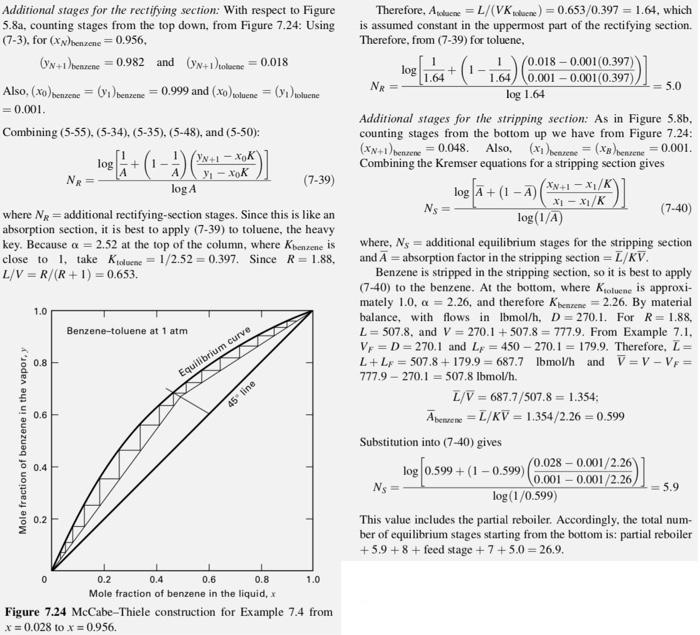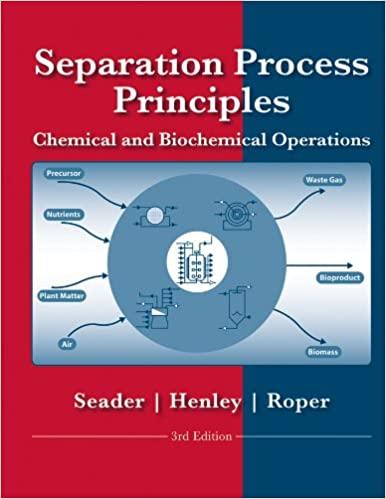Chlorobenzene production by chlorination of benzene produces two close-boiling isomers, para-dichlorobenzene (P) and orthodichlorobenzene (O), which are
Question:
Chlorobenzene production by chlorination of benzene produces two close-boiling isomers, para-dichlorobenzene (P) and orthodichlorobenzene (O), which are separated by distillation. The feed to the column is 62 mol% P and 38 mol% O. The pressures at the bottom and top of the column are 20 psia and 15 psia, respectively. The distillate is to be 98 mol% P, and the bottoms 96 mol% O. The feed is slightly vaporized with q = 0.9. Calculate the number of equilibrium stages required for an R/Rmin = 1.15. Base your calculations on an average a = 1.163 obtained as the arithmetic average between the column top and column bottom using vapor-pressure data and the assumption of Raoult’s and Dalton’s laws. The McCabe–Thiele construction should be supplemented at the two ends by use of the Kremser equations as in Example 7.4.


Step by Step Answer:

Separation Process Principles Chemical And Biochemical Principles
ISBN: 9780470481837
3rd Edition
Authors: By J. D. Seader, Ernest J. Henley, D. Keith Roper





